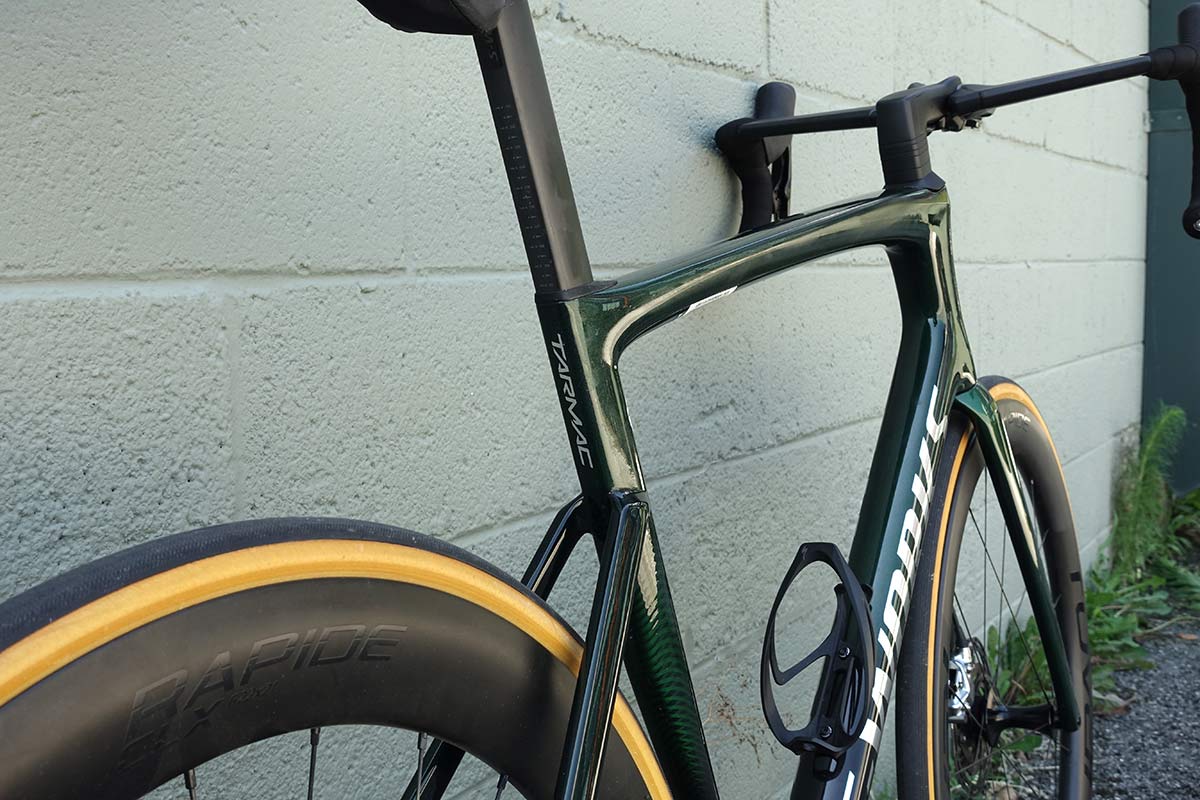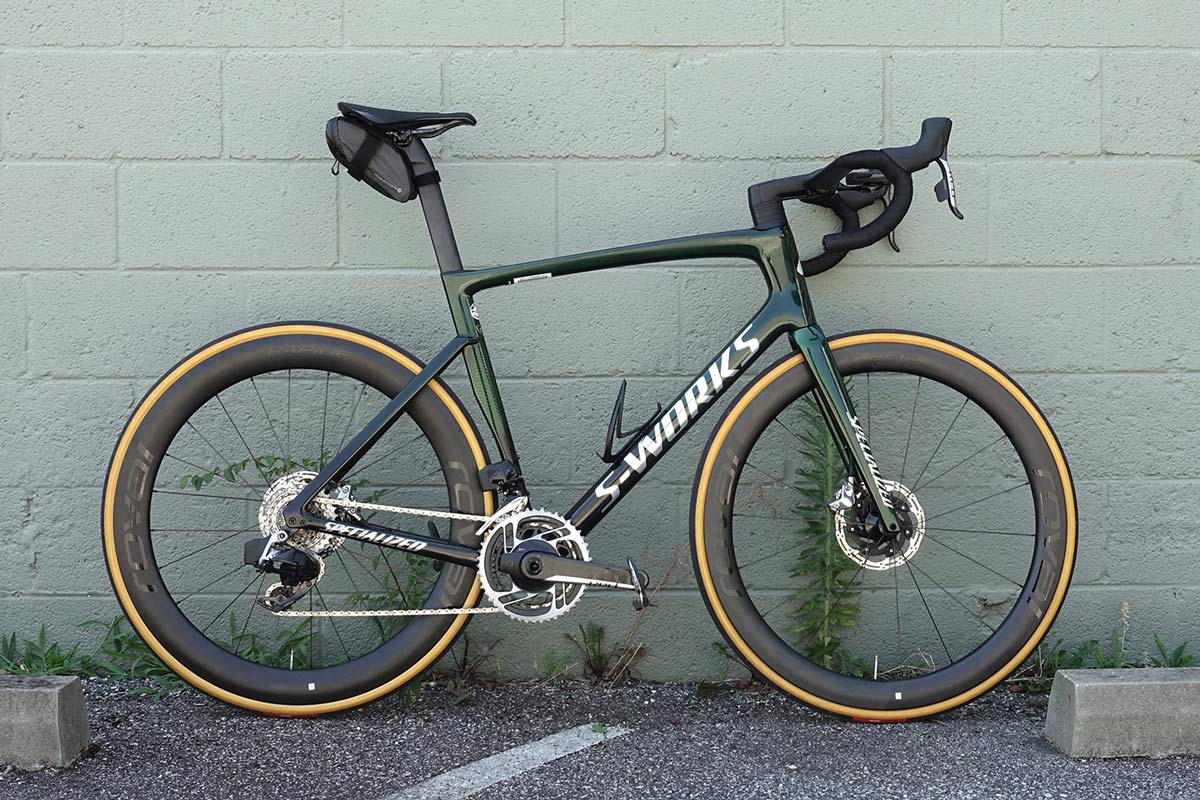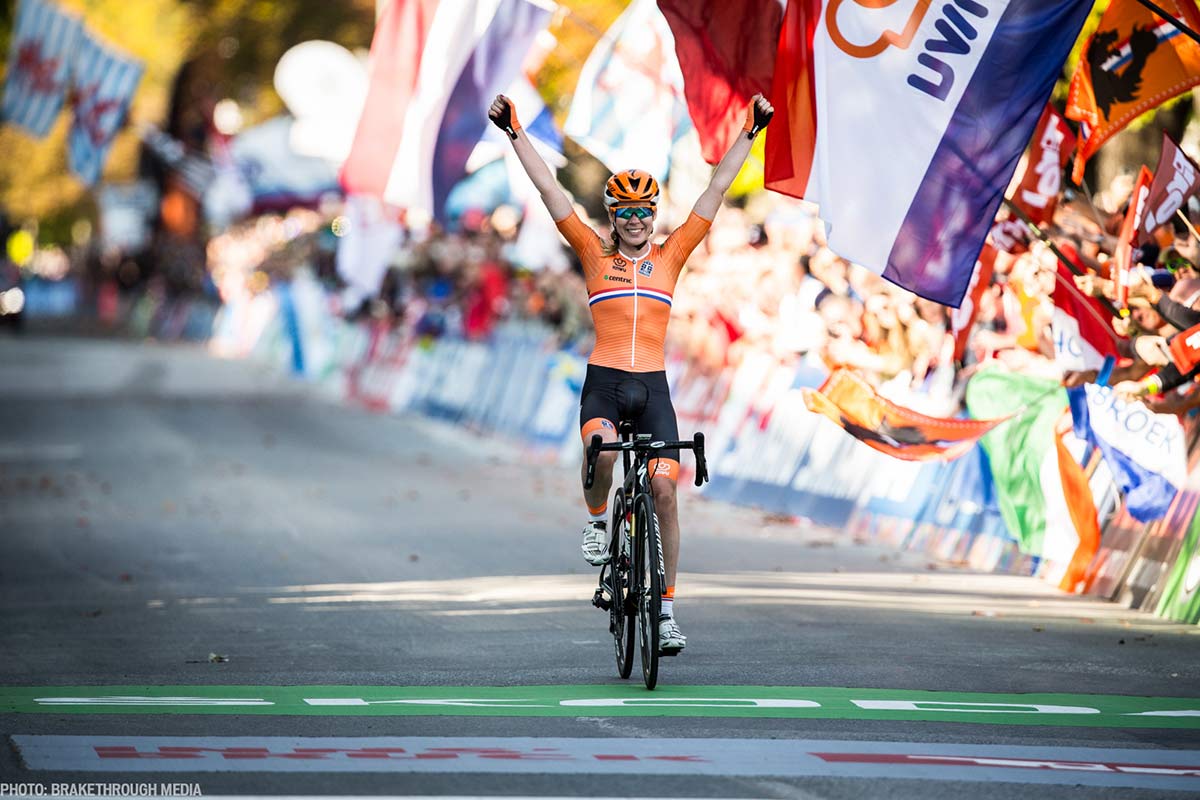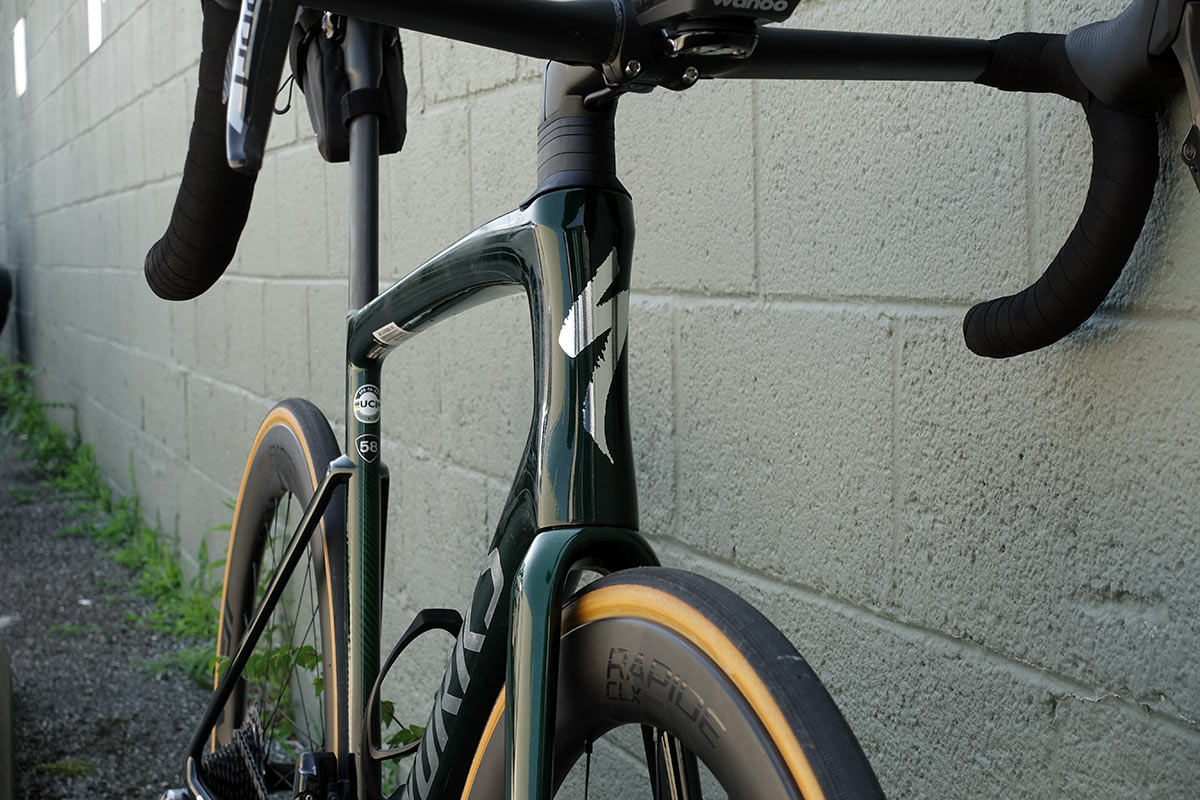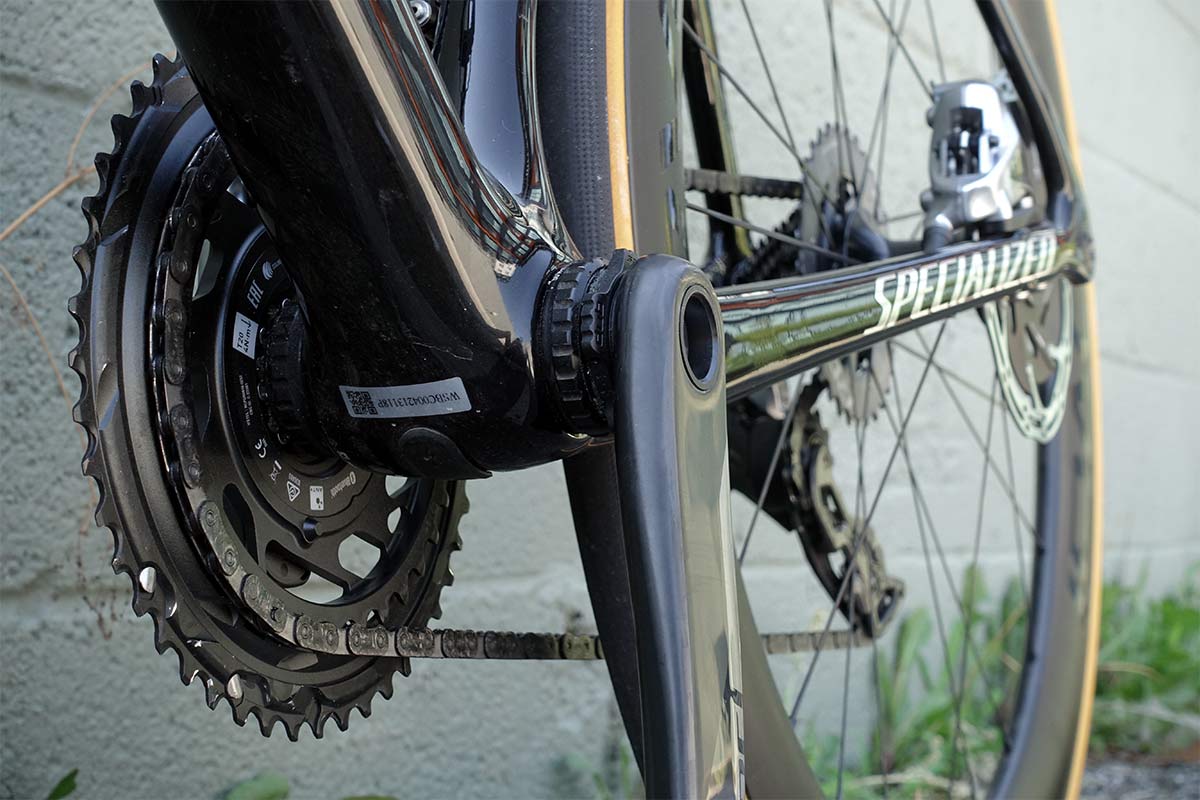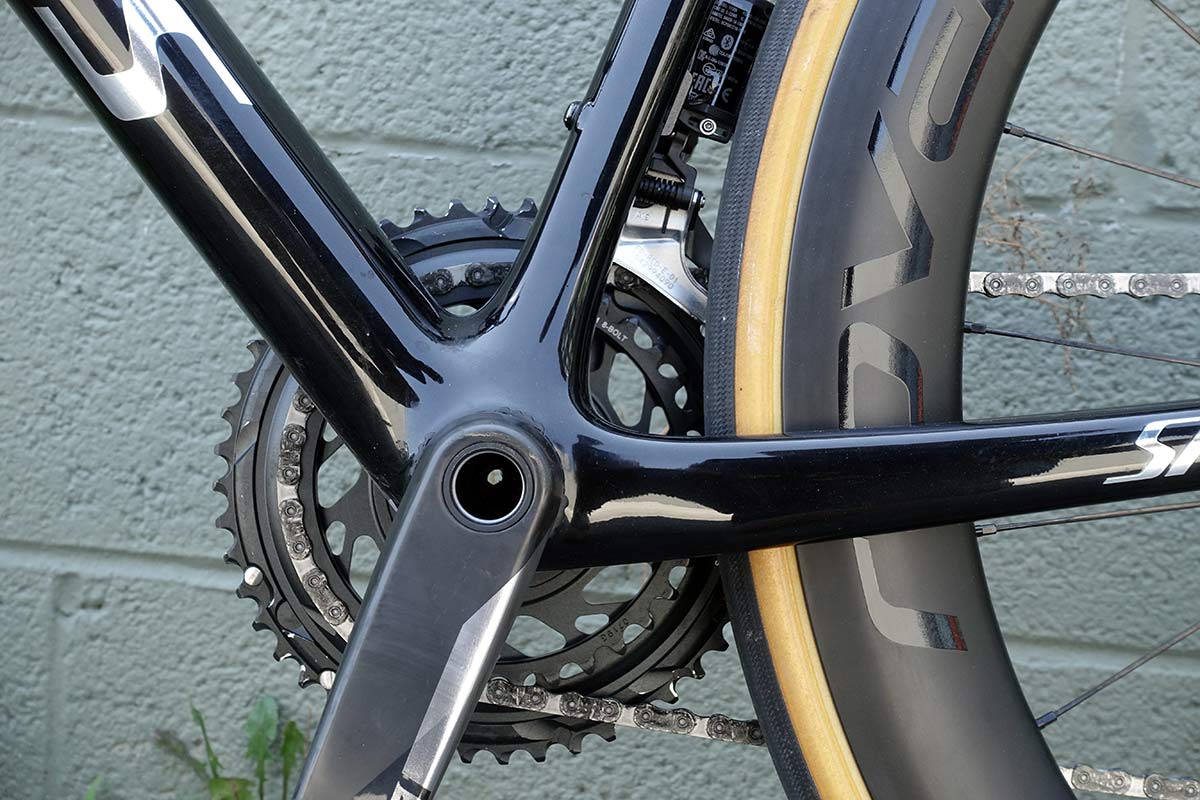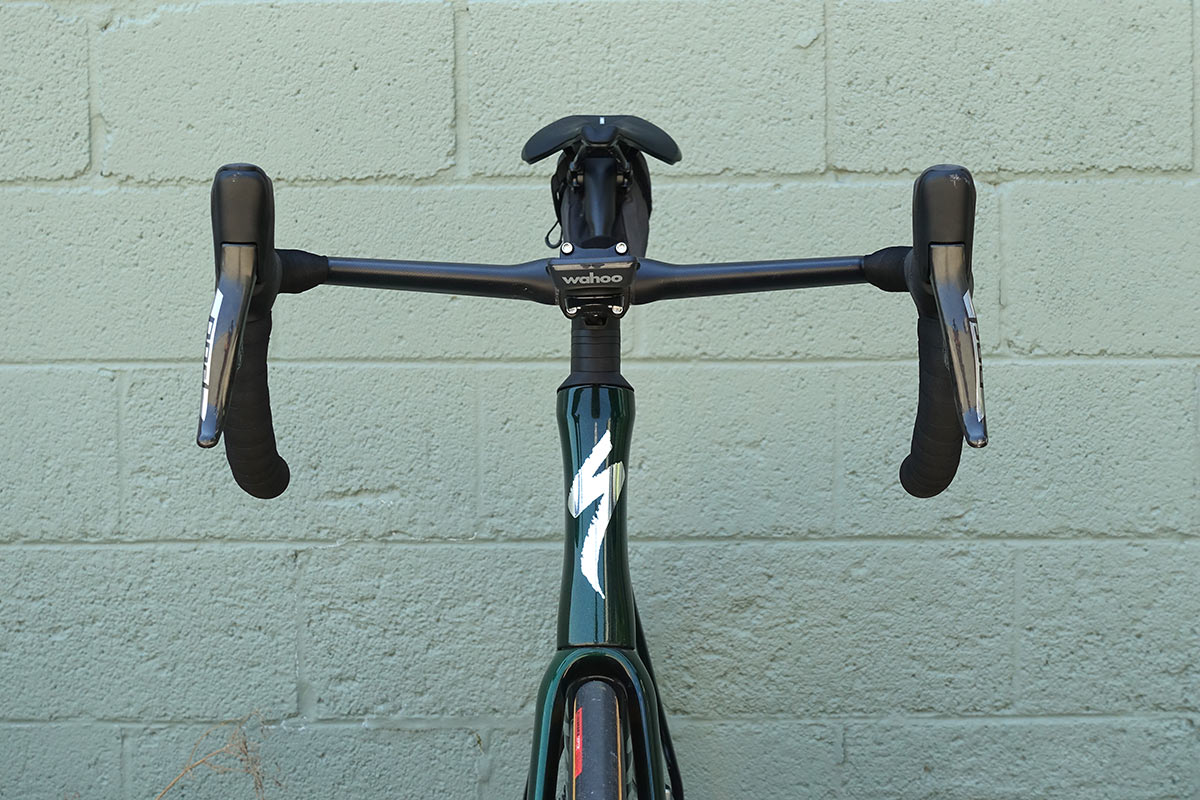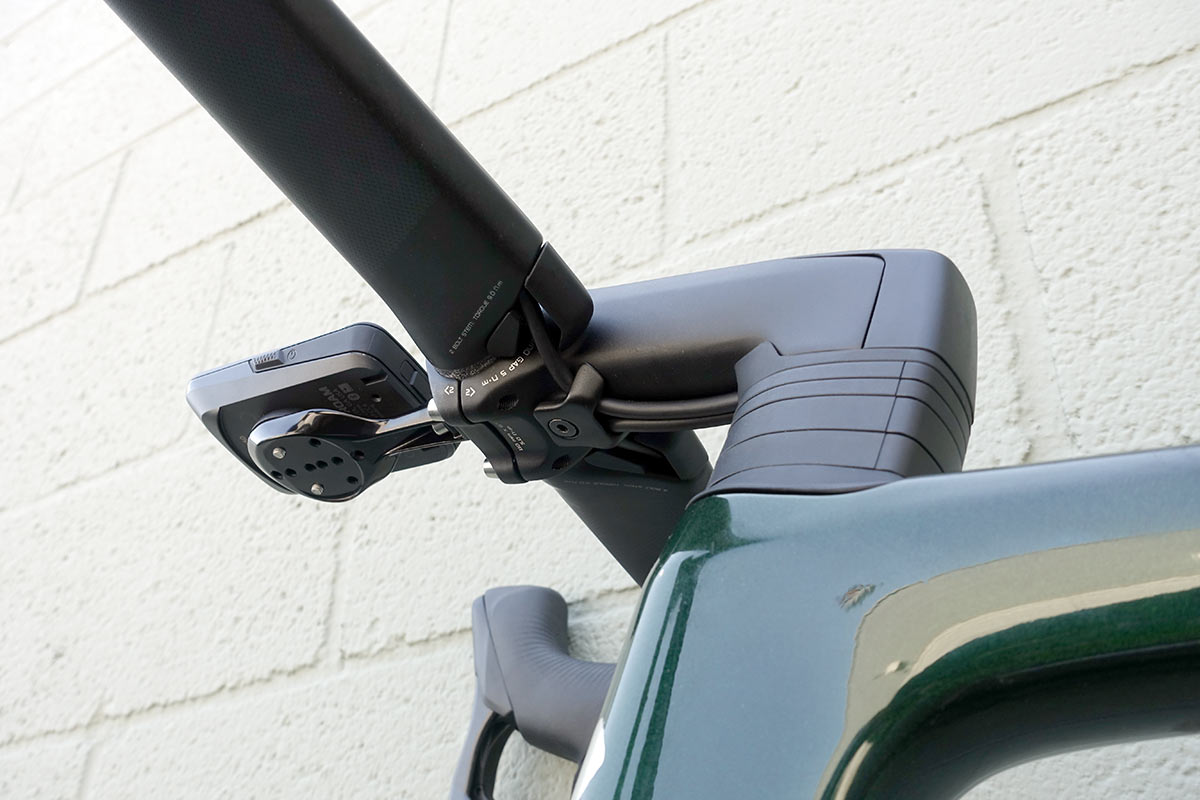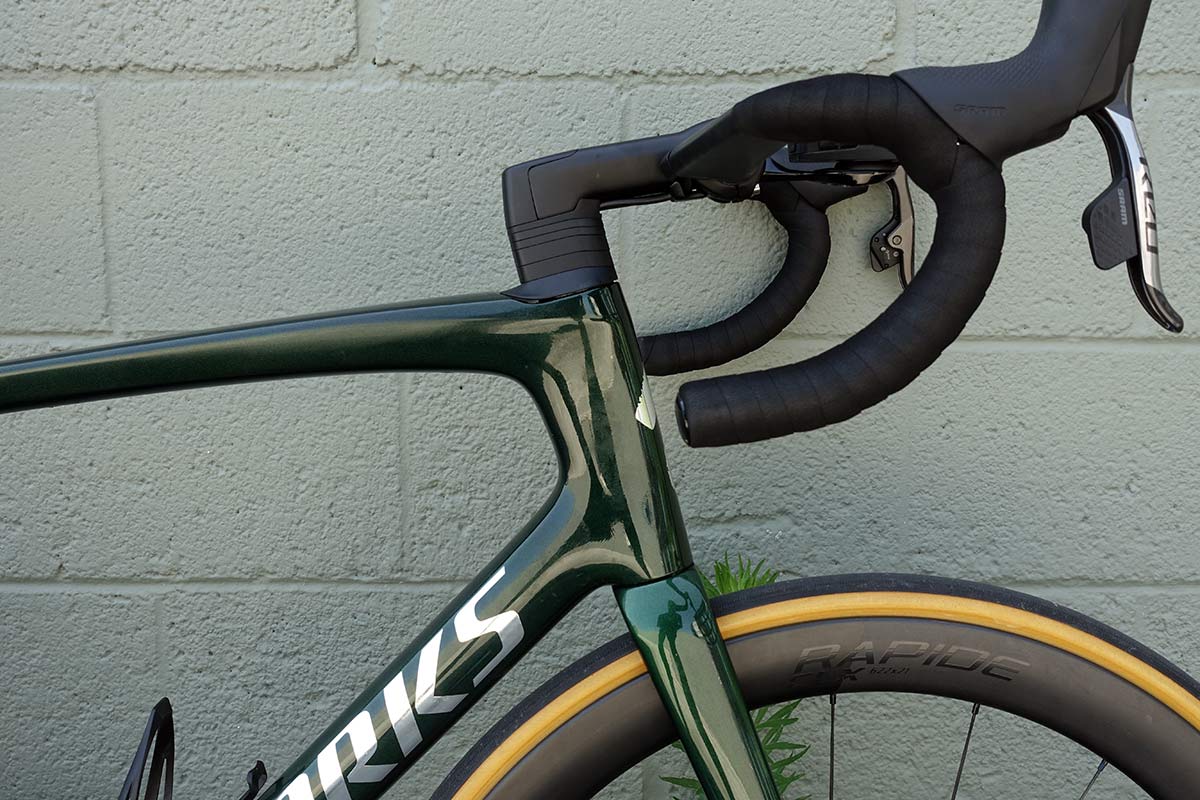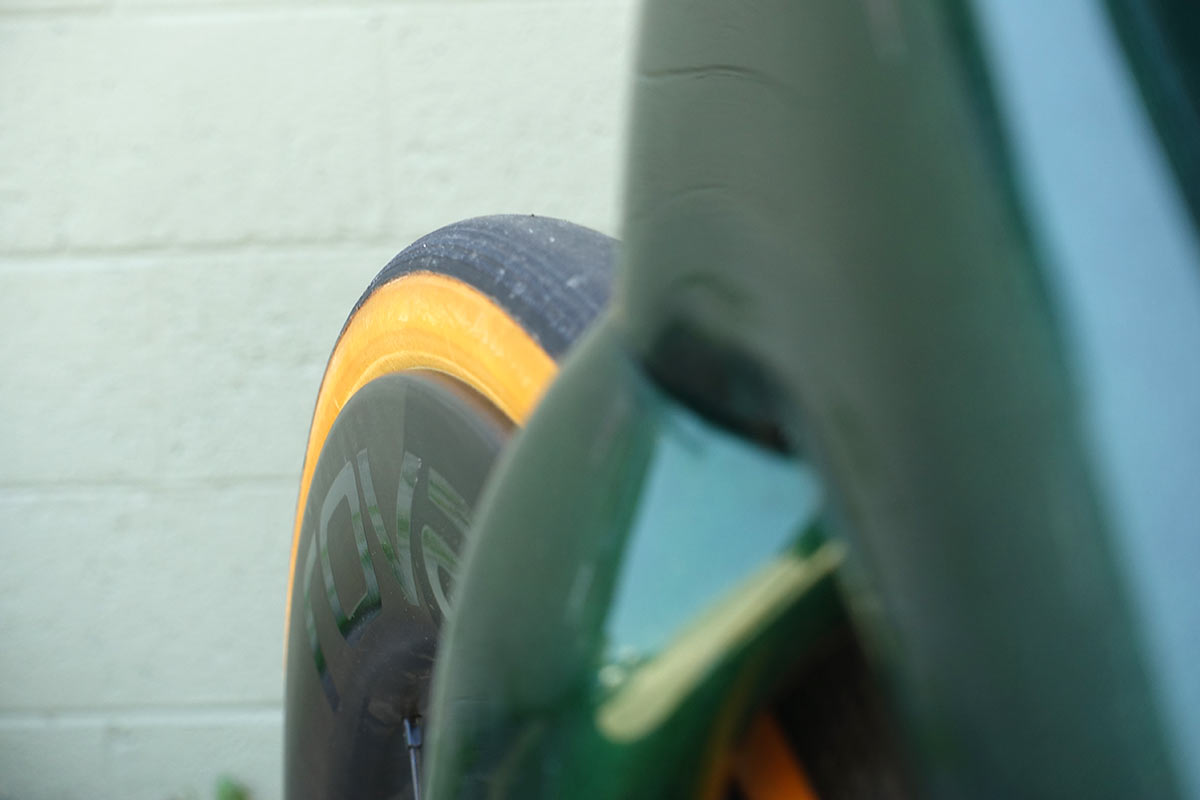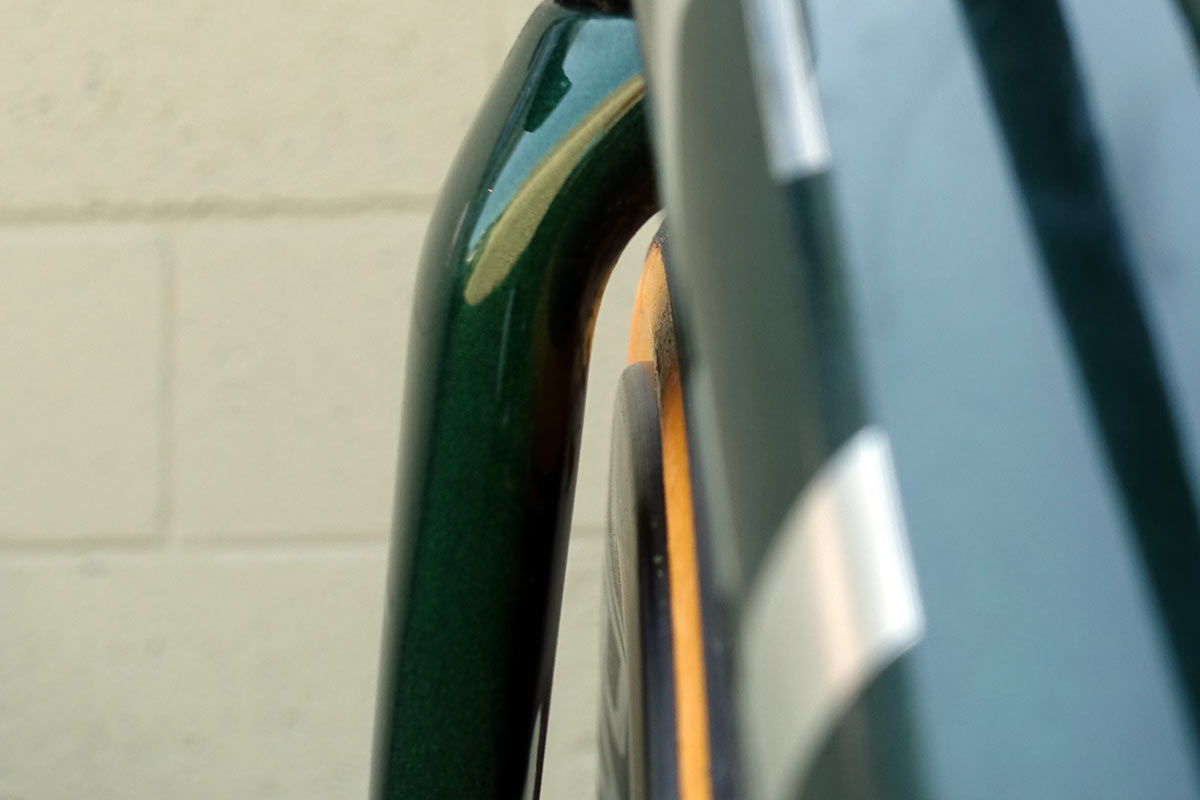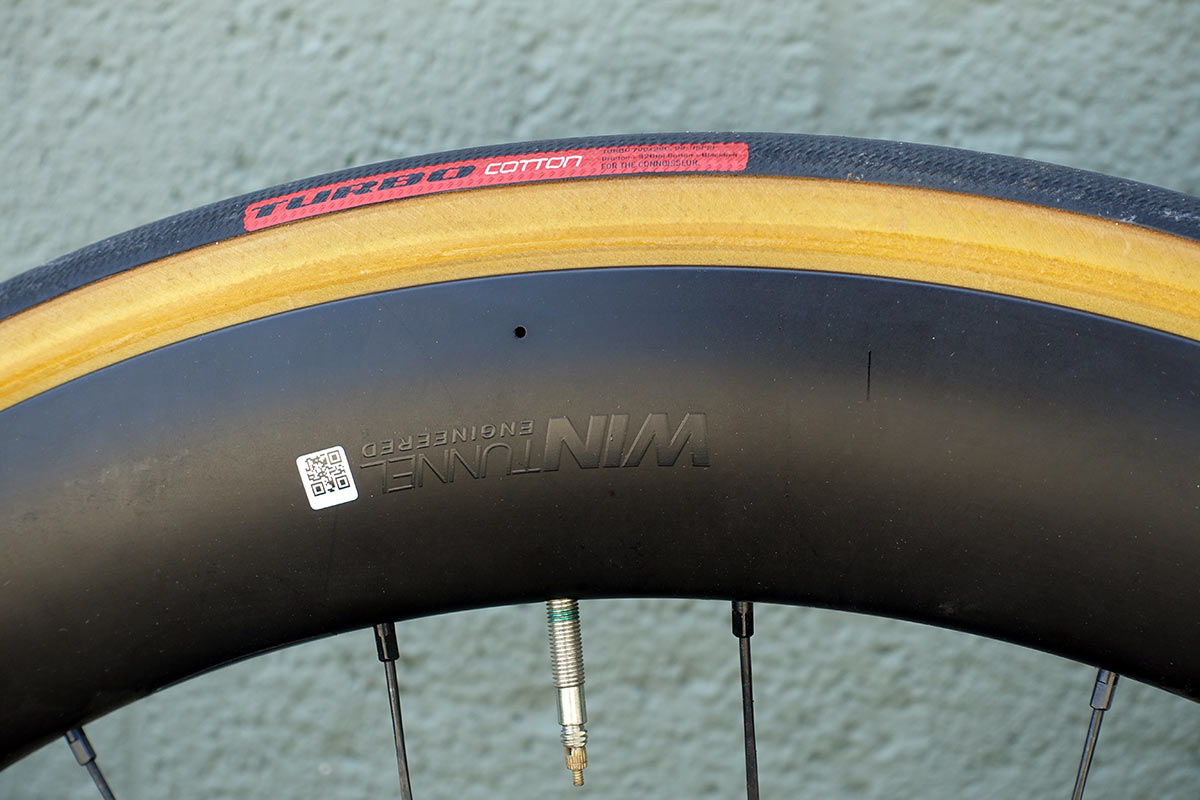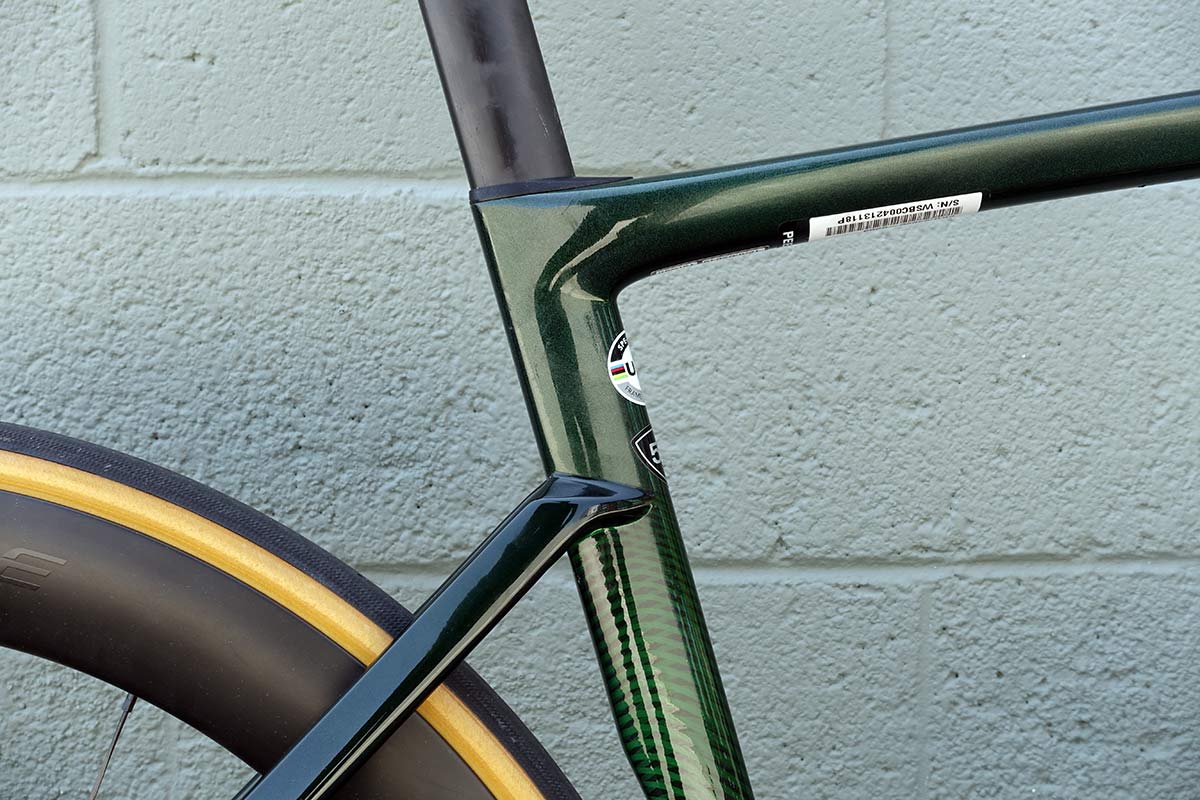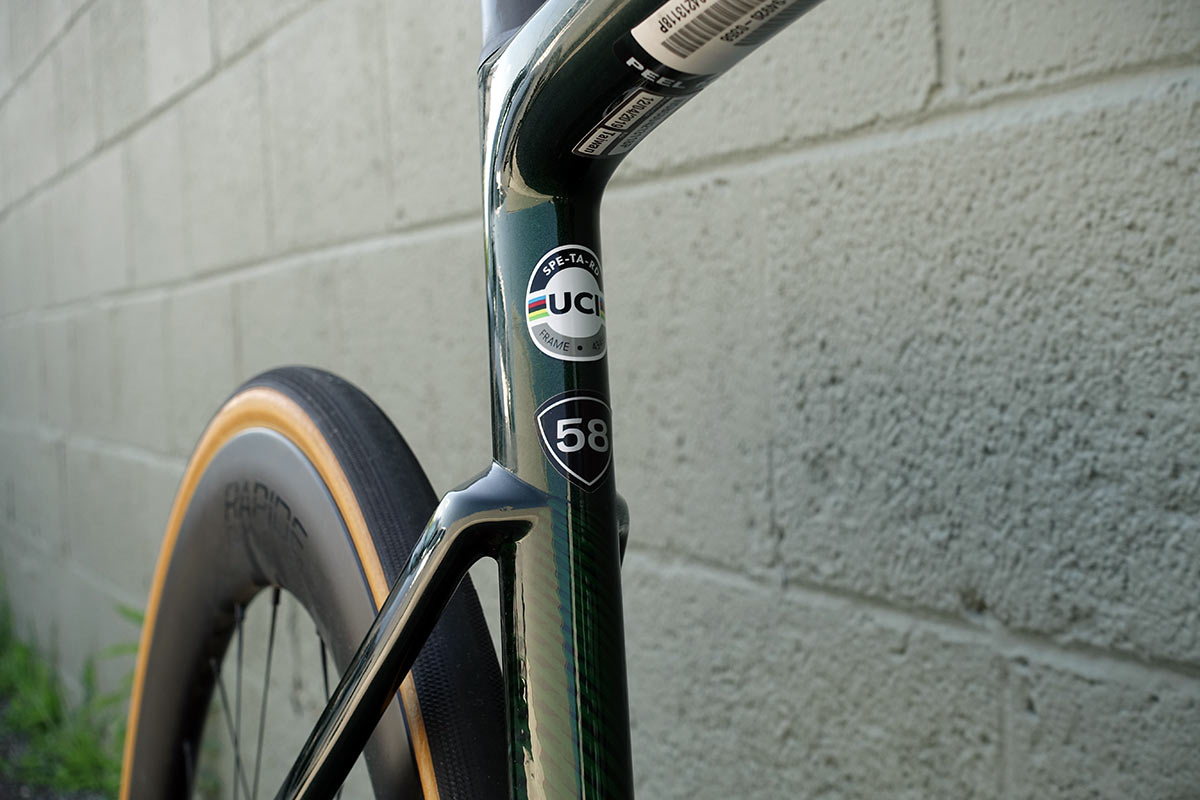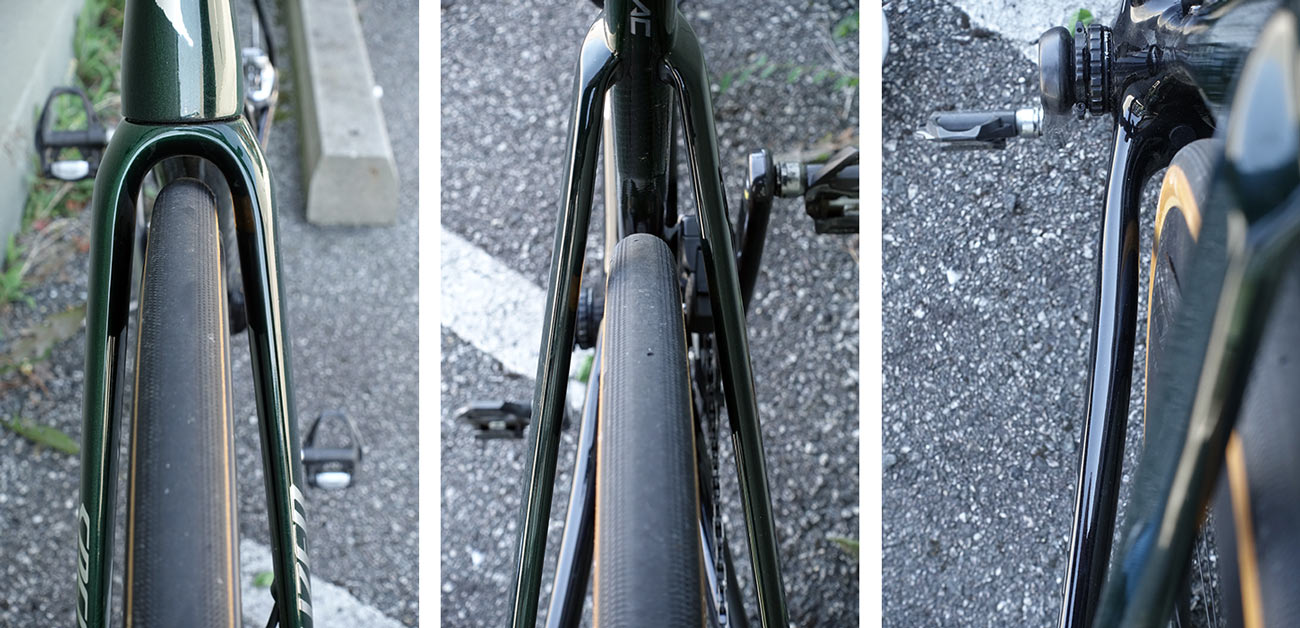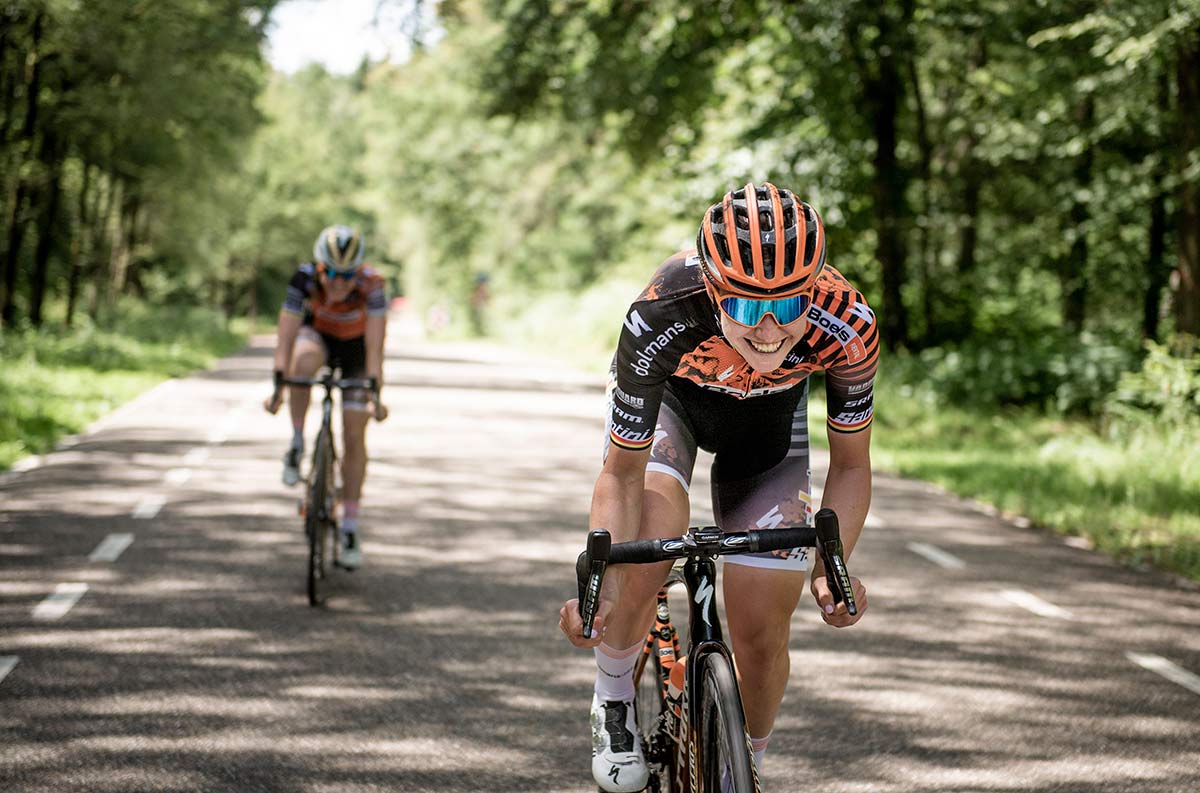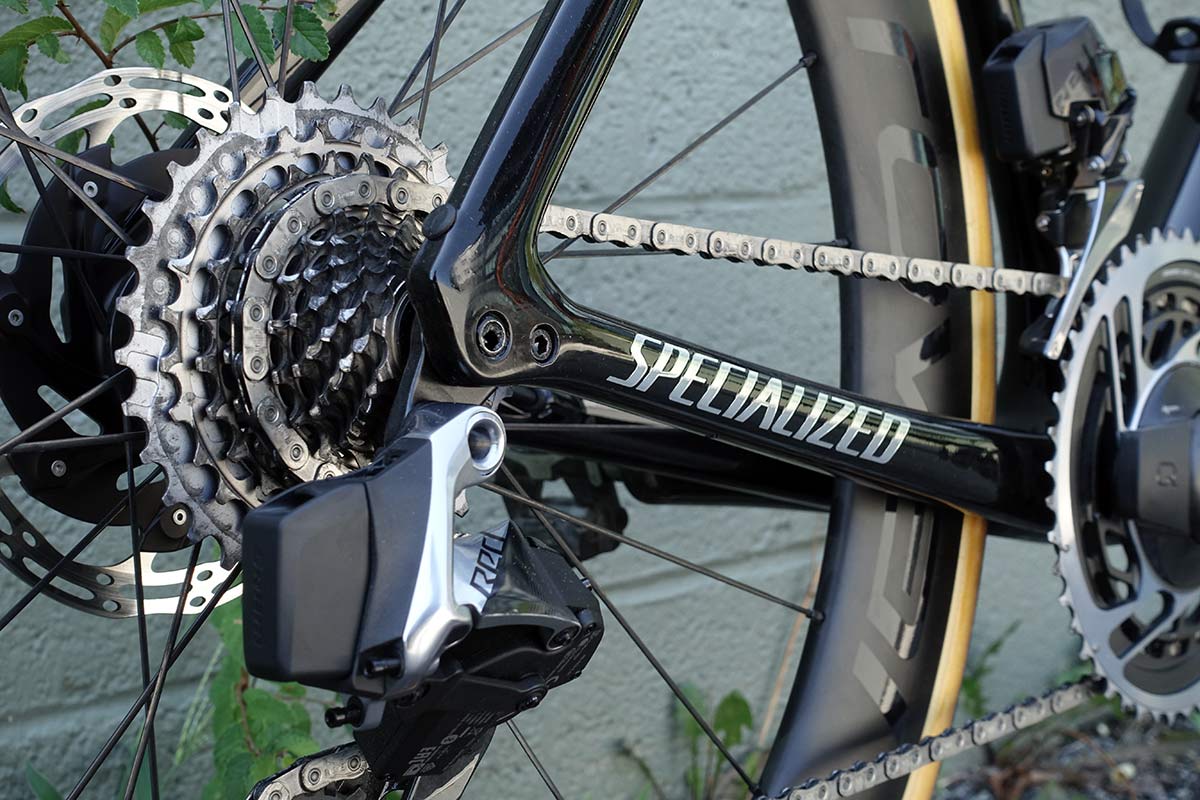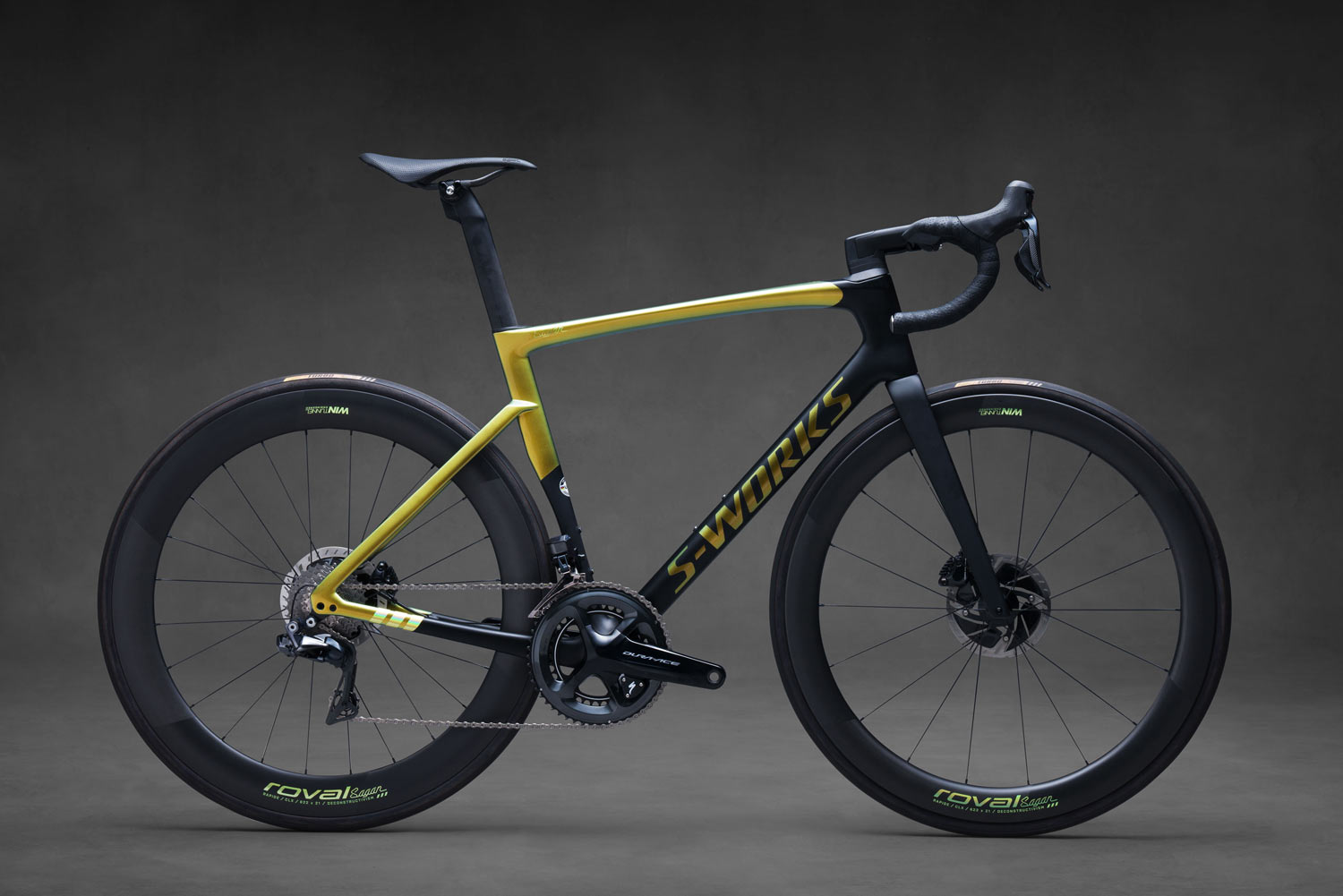If you have to pick between two road bikes for a given race course, it means there are compromises somewhere. For Specialized, it came down to choosing the ultimate aerodynamics with the Venge, or the Tarmac’s lighter weight for climbing and stiffer frame for sprinting. Clearly, something had to be done…
The Specialized Tarmac SL7 is “one bike to rule them all”
The goal for the new SL7 was to erase compromises. With recent Tour de France courses combining long stages with long climbs, and the average speeds inching ever higher, they needed a bike that was both light and fast. But the development happened across two different bikes for many years.
It started with the Specialized’s 2002 E5, raced by Mario Cipollini. That led to the Tarmac.
In 2007 Boonen stared winning on it and gave them the feedback to better develop top level carbon frames. Then they had to translate his feedback into other frame sizes, so they could fit smaller riders like Paolo Bettini.
In 2011, the Venge introduced full aero road frames in partnership with McLaren, and in 2015, the SL5 debuted “Rider First” size-specific layups, and it was their first disc brake Tarmac. Later that year, the Venge VIAS came out with fully optimized everything, and it took a few podiums, too.
In 2017, the Tarmac SL6 won its first world championship, gained disc brakes, and it used lessons from the Venge to become more aero. But then they updated the Venge in 2018 to make it a more rideable, rider-friendly bike that blended a little bit of comfort and ride quality back into the mix, and it shed about 400g while still getting faster.
Which showed them that they could probably make a bike that was both light, aero and pro-level race stiff. After years of testing, lab work, and development, here we are with the new…
What’s new about the 2021 Specialized Tarmac SL7?
Basically everything, even if a lot is borrowed from their other bikes. Here’s our quick video overview of the bike’s design, goals and features. Lots more below…
It’s lighter in all the right ways
First off, it’s lighter. As in, real world lighter. Claimed weight is as low as 800g for a size 56, fully painted, and including the front derailleur hanger. Which is the only piece of hardware that’s actually part of the frame…and it’s removable if you’re running 1x, which will save you ~15g.
The low weight is more impressive considering they switched to a threaded BSA bottom bracket, which means metal inserts bonded into the frame…the SL6 used their OSBB press-fit standard.
All bikes get a new integrated stem that’s 45g lighter than before, and also keeps it easier to service the internal routing.
They say, in the past, it was actually really hard to reduce the weight much as frames got smaller. So, a 52 might be only a few grams lighter than a 56. But with their revised layup strategies here, they could have a larger delta. So, comparing a size 52 and 56, the gap is going to greater (and the 52 much lighter) on the SL7 than on the SL6.
Conversely, going up in frame sizes won’t add as much weight because they were able to hit their increased strength and stiffness goals on bigger frames for bigger riders without adding a ton more material.
Lastly, even the non-S Works models are lighter than ever. S-Works frames use their top-level FACT 12R carbon. The others get FACT 10R, but that layup is only 120g heavier…and is still 40g lighter than the prior FACT 10R SL6.
The S-Works SL7 Di2 in Carbon/Color Run Silver Green hits the scales at a claimed 6.7kg (14.77lb). The Tarmac SL7 Pro UDi2 model weighs in at 7.3kg (16.09lb), and the Expert UDi2 at 7.65kg (16.87lb).
It’s more aerodynamic
Compared to the SL6, the new SL7 saves you 45 seconds over a 40km time trial. How? Improved system aerodynamics.
Specialized isn’t breaking out the specifics of frame aerodynamics here, they’re talking about the complete bike. In particular, the top end bikes spec’d with their Roval Rapide CLX wheels, and the Aerofly II handlebar and integrated stem. All of which creates a package that maximizes system aerodynamics.
But even without those components on the spec sheet, the new bike is more aero than before thanks to tweaked tube shapes. It borrows the jutted seatstay/seat tube junction from the Venge, and the seat tube has a more pronounced air foil shape.
That leads into a slimmer seatpost, which means the Di2 junction box sits in the top of it seatpost, inside a wider section just below the saddle’s clamp area. It’ll have a flat cover for bikes running eTap or mechanical drivetrains.
The Aerofly II bars come standard on the top four models and hide everything inside, spitting them out directly against the stem. Brake hoses (it’s disc brakes only, no more rim brake options) get captured by a clamp and directed straight backward where they enter the steerer tube and disappear for good into the frame and fork.
Di2 wires will follow the brake hoses, and all stock builds for the SL7 will come with either SRAM eTAP or Shimano Di2 drivetrains. But…should you buy a frameset and want to use mechanical shifting, they’ll include a separate upper headset cover with holes for the cable housing to enter. The result is a strikingly clean aesthetic no matter how it’s built.
One other note on the internal routing. You’ll have to remove the fork to install or redo it, and there are no internal channels or tubes. Specialized installs foam “churro” tubes over the brake hoses and provides them for mechanical installs, which keeps anything from rattling around inside the downtube. There’s a small port under the BB to assist you in guiding things to the appropriate chainstay.
Interestingly, Specialized calls out the head tube, seat tube, fork legs and seat stays as the most updated shapes to improve aerodynamics…but not the downtube.
Where many brands make a lot of big, bold claims about downtube shaping, Specialized told us “the tradeoff in performance when making the downtube more aerodynamic doesn’t make up for the added weight and reduction in overall handling and ride quality.”
Which reinforces the notion that this bike gets all the aero gains when it’s running the full system, but is still more aerodynamic even when spec’d with standard bars and other aero wheels.
But the wheels… The top two models get their new flagship Roval Rapide CLX wheels, which have front and rear specific rim profiles and depths. In particular, the front’s massive 35mm external width is said to minimize the effect of sideways gusts, helping improve stability and, thus, overall speed.
Check out the full tech coverage on those wheels to see what makes them special. Since these rims are tube-type only, they’re shipped on the bike with the non-tubeless Specialized Turbo Cotton 320tpi 700×26 tires.
It rides and handles better, too
Where early Tarmacs were something only a crit racer (or sponsored pro) could love, it’s become a much more approachable bike over the years. The SL7 pushes the layup to become their “most balanced” Tarmac ever.
I compared the geometry for three different sizes across the range, and the only important fit metric with appreciable differences was Stack. The SL7 has 10mm lower stack heights across the entire size range compared to the SL6…because the new headset top cover is taller. So, with the same amount of spacers, you end up in the same position as on the SL6. Otherwise, the geometries are functionally identical between the SL6, SL7 and Venge.
So, it’s the layup and design that has improved the ride quality and performance. Specialized’s Product Manager, Cameron Piper, told us their pros said the SL6 felt stiffer in the front than the rear, and it felt unmatched. So, they paired the Venge’s rear end stiffness with the SL6’s laterally/torsionally stiff front end to balance things out.
In particular, Piper says the SL7’s seat tube’s new deeper aero profile provides more of the power-transfer kind of stiffness they wanted. But all of the stiffness gains were made without sacrificing compliance and ride comfort.
So, the overall frame stiffness, smoothness, and compliance is now more balanced front to rear.
Tire clearance probably helps, too, and this one is rated to clear 700x32mm tires. We have an S-Works model in for review and so far it does feel quite nice, even on longer rides. Stay tuned for a full review at the end of August.
Oh, and it’s gender neutral
Pick your favorite pronoun, then pick your favorite frame color and build spec. There are no male- or female-specific models. Just an assortment of cool paint schemes and builds at various price points that’ll fit any rider. Specialized says you’re just as likely to find differences in fit and size between two men or two women as you are opposites.
How is the Tarmac SL7 different from the SL6 & Venge?
At a glance, the new SL7 doesn’t look radically different than the SL6 it replaces, and it’s very similar to the latest Venge. But there are important distinctions, and it’s important to note that the SL7 basically replaces the Venge. Going forward, Specialized will only offer the Venge as a frameset, and only in select markets.
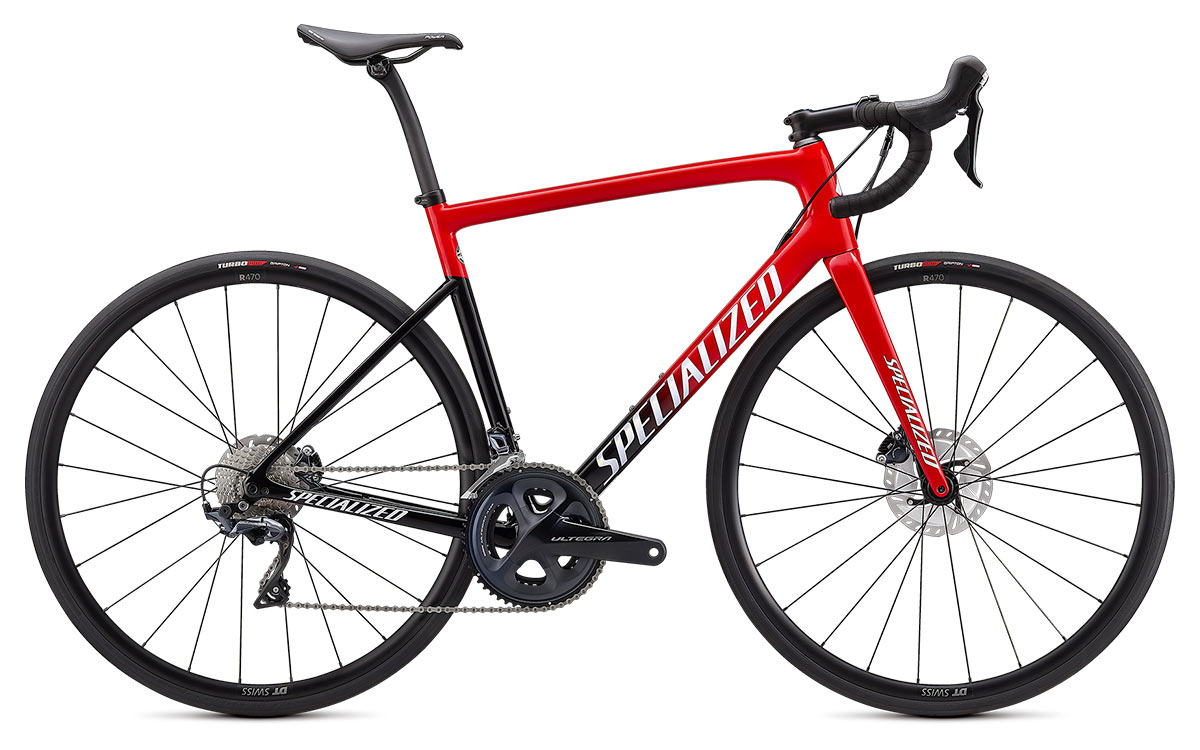
And the SL6, shown directly above, will remain in the line with Base, Sport and Comp models using their FACT 9r carbon.
- The SL7 is lighter than the S-Works FACT 11r Venge, and basically just as aerodynamic. Specialized says the SL7 has only 2.5w more drag in the wind tunnel, but the overall ride quality improvements in the SL7 erase any advantage that might have.
- The SL7 switches to a threaded BSA bottom bracket, no more press-fit OSBB. Unfortunately, this means…
- Specialized’s prior carbon Power Cranks are no longer compatible. But they’ve adapted their S-Works Power Pods to work on Dura-Ace cranks and will work with the app (which probably wasn’t hard because they’re basically customized 4iiii strain gauges).
- The SL6 models now only have a round seat tube, and cables/hoses enter the frame near the front of the downtube. The SL7 has more aero shaping and hides everything internally starting at the headset.
It’s the only race bike they need
Their pros will only use this going forward, because they believe this is the complete race package. Well, except for the cobbled classics, that’s Roubaix territory. You won’t see them choosing between a Venge or Tarmac anymore at the classics.
At launch, they’ll offer a limited edition Peter Sagan edition, with only 300 being made worldwide. It gets a full Shimano Dura-Ace, custom decaled Rapide CLX wheels, and a gold/black paint scheme. Check out this post for the full specs, models, options and price list.
